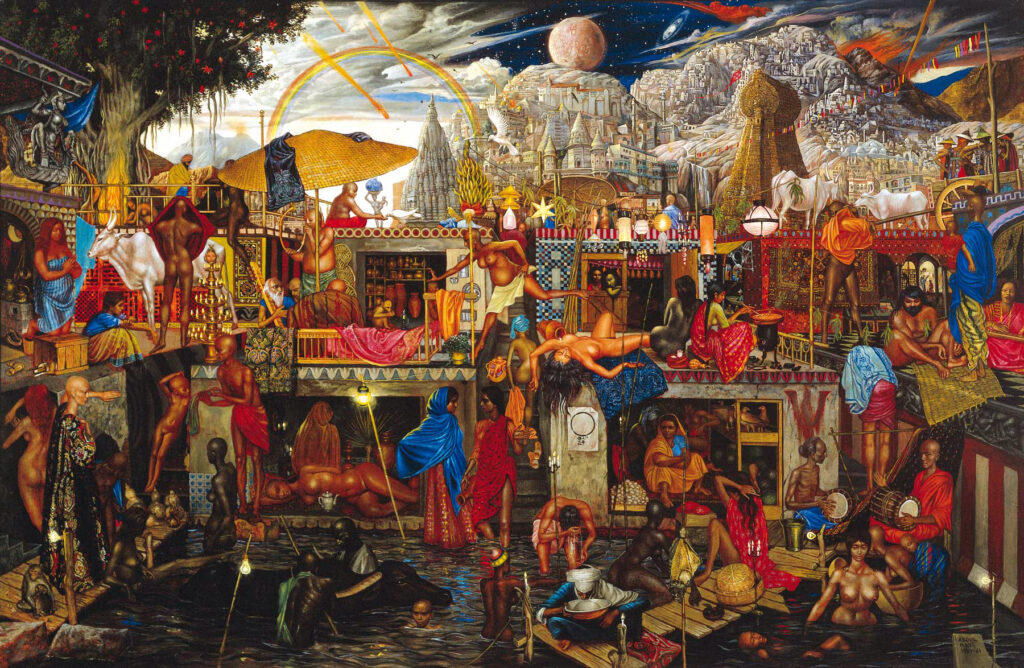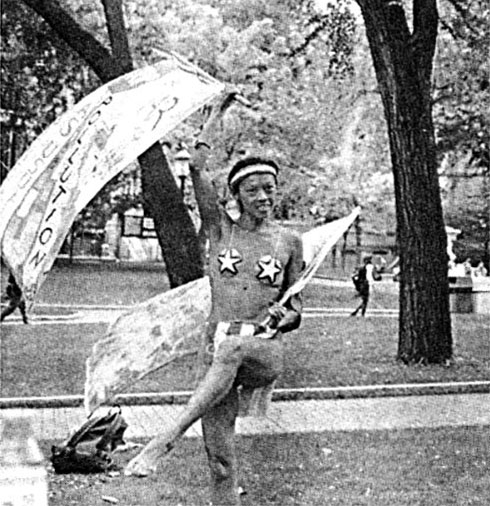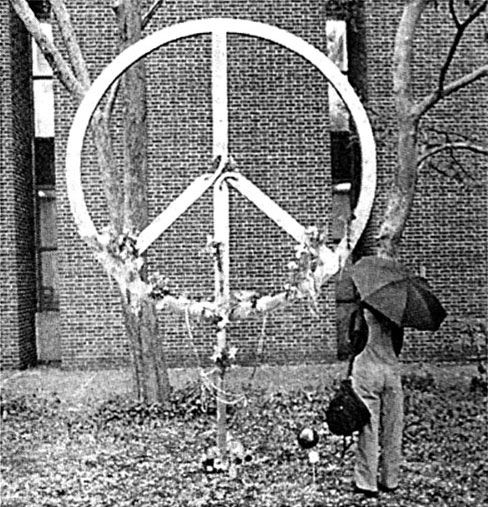Atmospherics
1979 | earthquake island
WHILE finishing up Vernal Equinox in the studio in New York, I began some tracks toward a new record in 1977. Blessedly, my instincts led me to search for something beyond the downtown “new music” menu of (what was later to be called) “minimalism” and Dada moves. In comparison with the sparks given off when I saw Miles, the word “bloodless” came to mind when contemplating a life in the even eighth-note stalag so—like a college professor who leaves his wife for a stripper—
I took the leap and assembled musicians like Nana Vasçoncelos and Dom Um Romao (percussion with Milton Nascimento, Weather Report) and Badal Roy (later with Miles), Miroslav Vitous (bass with Weather Report) and the rest of the talented, decidedly non-minimal gang in the color-drenched album picture by Francis Ing and Daniela Morera of Italian Vogue.
By putting my developing raga thing in the same space with the Afro-Brazilian percussion and guitars, spiced with the Indian tabla, by allowing a bit of my native experimentalism to show up in looping, downspeeding tape, and using the harmonizer on the trumpet (a first), I found myself in a no-man’s-land between my native world of “experimental music” and jazz precepts. This was the musical echo of the choices I was making in my personal life, gradually pecking my way out of the shell of an over-intellectualized art music and saying yes to what actually turned me on. Tomato Records, which was starting up in New York with an eclectic roster of Philip Glass, John Lee Hooker and such, heard the partially-completed tracks, signed me up and gave me an advance to do more tracking at Electric Lady, the old Jimi Hendrix studio in the Village, and final mixing at the Power Station.
After a Steve Lacey concert at The Kitchen, I met an exotic woman, a friend of his who connected me with Mati Klarwein, whose painting had always signaled a unified theory of life that I felt complete resonance with and…
…who allowed me to use the magical painting, ‘Flight to Egypt (Benares)’ for the cover.
Of course, I kinda fell in love with his beautiful Brazilian girlfriend. Come to think of it, I fell in love with him, too, and we remained lifelong friends.

Musically, this record went too far into a jazz/fusion thing which, thank god, I was neither up to, nor ready for, or I might have been tempted to go down that road further. Miles and Weather Report already existed. So did Philip Glass. This was not the hard-to-define, in-between place which my best work became. Like a first-time director with a starpower cast, I suppose I got a little bedazzled by all the musical firepower I had assembled and it got out from under me. I needed to come up out of something, gradually, note-by-note like the slow “alap” section of a raga—not have something dumped on top of me which demanded a known response.
But ‘Baliá’ has a nice texture.
And I have a lingering fondness for ‘Tribal Secret’s’ spooky synth chords with Nana’s harmonized cuica meshing with Badal’s tabla.
And Earthquake Island finally winds up to something nice before settling into the long coda—a piece of which was looped and became the ‘Burundi Cloud’ background over which ‘Charm’ unfurls in the next record, Possible Musics. Thus the full title: ‘Charm (Over Burundi Cloud)’.



